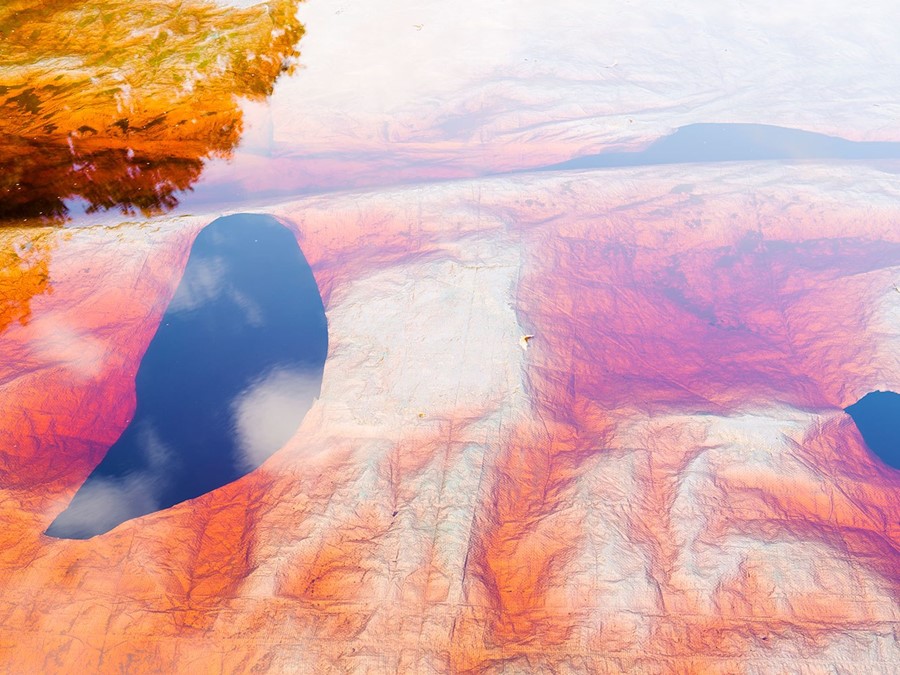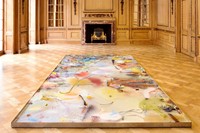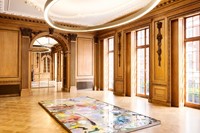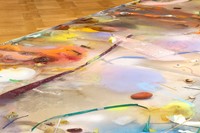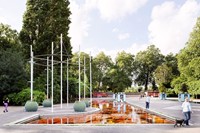The London-based artist discusses her latest liquid work: transforming the Pleasure Garden Fountains of Battersea Park into a rainbow-hued haven
“When I first visited Samara [Scott]’s studio – before her exhibition, Silks, last year – I was really interested in her connection between the familiar, everyday substances that often link us so closely to place, and the very intuitive ways in which she manifests those materials,” Ned McConnell, curator at the Pump House Gallery, explains. Last week, the gallery unveiled a special site-specific work by Scott in the Pleasure Garden Fountains of Battersea Park that perfectly exemplifies this statement – a public installation which sees the waters of the historic spot transformed into a ‘liquid painting’ using colourful, biodegradable dyes.
The London-based artist’s renowned liquid works merge scientific marvel with artistic awe: her mixtures are made of all kinds of commonplace consumer materials, like eyeshadow and nail varnish, as well as organic matter like soil and clay, that are petrified and left to slowly transmute over time, alluding to the physical process of consumption and its impact on the body. Scott regularly pushes at the parameters for presenting and viewing a painting or sculpture, and her latest endeavour incorporates new elements such as movement and smell.
The Pleasure Garden Fountain installation also forges links to the industrial past of Battersea, when, as McConnell explains, “the area would have been filled with the sights, smells and sounds of industrial Britain – and it would have been in these sights and smells that the bodily memory of the place was rooted.” Shortly before she revealed the new work to the public, we sat down with Scott to talk about her experiments with materials and substances, the practicalities of her latest project, and the reactions of her audience.
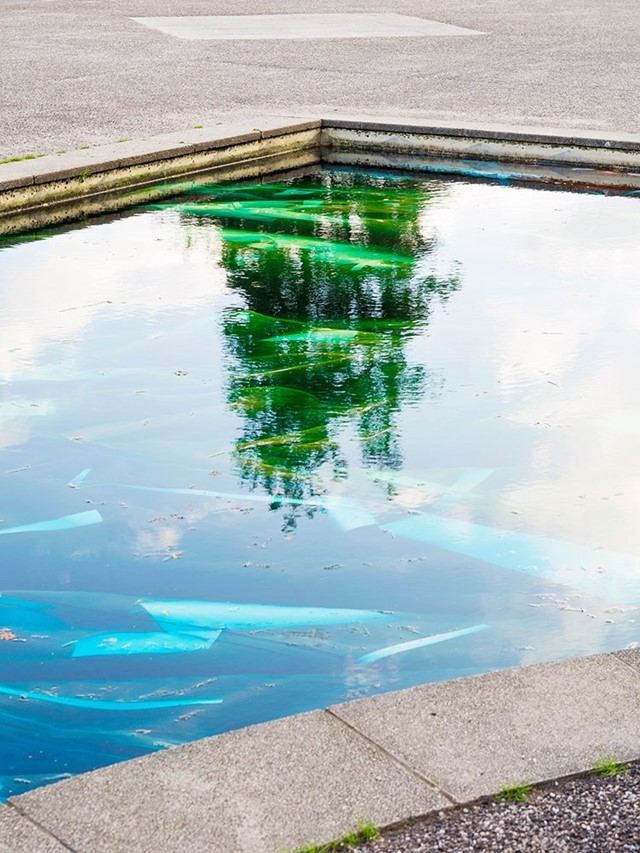
On the history of the Battersea Park area...
“I’m interested in the history of the Thames: that original wet motorway into the factory guts of London, and how these areas have been recast into a burst of riverside swank, glossy concrete and slimy glass. In some ways, the river is obsolete; it’s an old forgotten god and the city doesn’t need it anymore. It’s become a landmark, a way to orient ourselves, and a part of the industry of the Prize View – there are no longer factories on its banks, but an alarming acceleration of downloadable new lifestyle-luxe-apartments. To talk about the park in particular, I’ve always found the fountains to be fantastical, out of date, weird tropes. They were designed in the 50s and now have the feeling of midlands shopping centre decor, tagged for demolishment. They already feel like ghosts or relics of past ideas of modernity. That's what I’m interested in: those graphic changes of the area, the absolute industrial polluted poverty morphing into this affluent sheen. What gets left behind, what gets razed, what gets fetishised by new covens of wealth.”

On experimentation and inspiration…
“Everything begins with a sort of sentimental material investigation; a slow digestion of cosmetic, edible, and chemical cultural debris. I always develop ideas to integrate them into spaces (which I always think of as landscapes) rather than control-cut-and-pasting from the studio, and the studio processes are also this constant shuffling, sampling, like making swatches of experiments or effects, and then amending them into a space.
I’ve been working with some extremely temperamental materials and I’ve been both inflamed and animated by their unruliness, their seasonality. I wanted to amplify these erratic and volatile substances and processes in the echo of land art and its machismo operations – feeling moved by the historical gestures, but simultaneously finding it kind of hilarious – thinking of artist like Christo, Walter de Maria, Peter Hutchinson, even Goldsworthy. I’ve been looking at lots of naf coffee table books about satellite views, apace with that bastardised decorative culture, there are the calligraphies and hieroglyphs of industrial civilization and botched utopias, or the patterns and ornaments that human pleasure and labour coaxes and bullies out of nature.
There’s also all these trickled down traces of arte povera – like Pino Pascali or Burri. But also artists like Ana Mendita or Nils Udo, and that nostalgic hippy motive of going out into the landscape with a tool kit and scarring it or hijacking it, adjusting and amending it, letting natural processes pollute or compost the work. That sentimental bodily eros is closer to me, something more ruptured and vulnerable, swampy and feline: tearing, ripping, melting; a more voluptuous mingling. I want to make work that's full of blemishes and hormonal liquids, spawning these gropey gastric compositions."
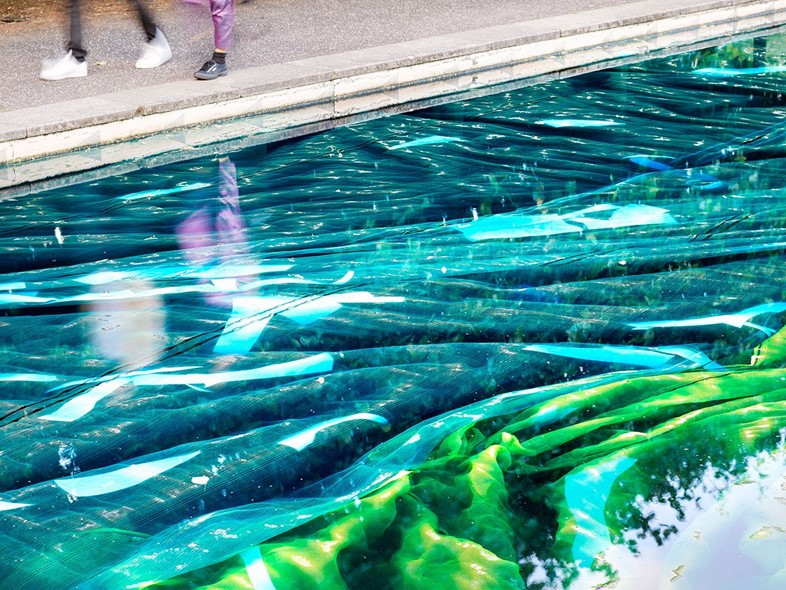
On working outdoors...
“There is so much sticky obstructive red tape when it comes to working with public bodies, but those restraints can also be stimulating. The scale is insane, and the environment has such a throbbing personality of its own and working with or against is testing. There is almost nothing to frame or settle the work, and the surrounding environment just gobbles up any soft gesture. I also wasn't allowed to poison any dogs or children, or tamper with the ecosystem of the park, but at the same time wanted to make something sensual and uncomfortable. Working outside affirms the glaringly obvious – that you can't control a thing. Wind and rain are enraging. Also, at this scale, there is no way to really test out the ideas before you are already inside it and you are strapped into a lack of contingency.”
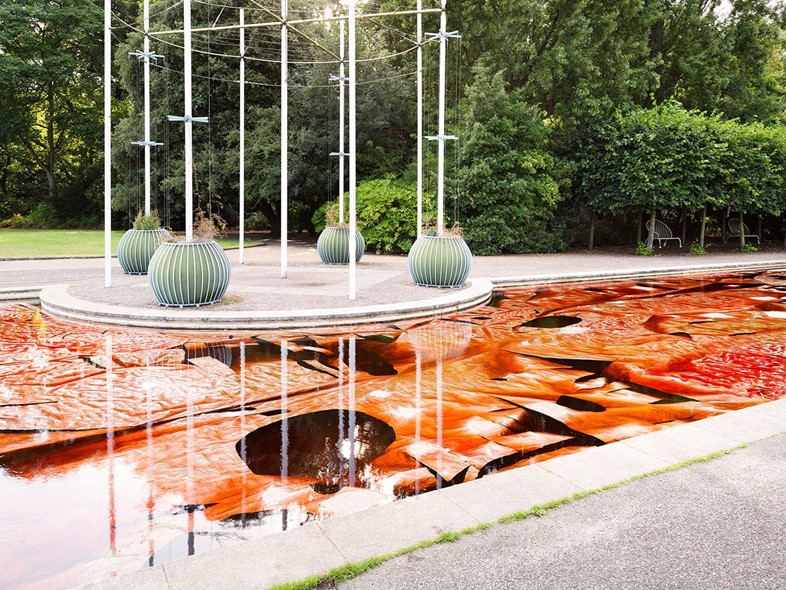
On the sculptural elements in the Pleasure Garden Fountains...
“The works are two suspended underwater reliefs which undulate just below the surface of the pond water. It's a Matisse-y tapestry of building site materials: Tarpaulin, chrome and bitumen paint, scaffold netting and damp proof membrane. But there’s also another register, something much more slimy, erotic, surreal (a friend described the works as 'Georgia O’Keefe sexscapes'). I always work with a sort of hijacking methodology – reshuffling or amending pedestrian materials into new collages. I use materials that have an atmospheric narcissism to them, or are connected somehow, quite directly, to a usually feminine vanity. I was even thinking though that these are the tools of the plastic surgery modification of the Nine Elms facelift: the wet wipes and sponges and plasters. A kind of regurgitated archive of the density of construction schemes.”
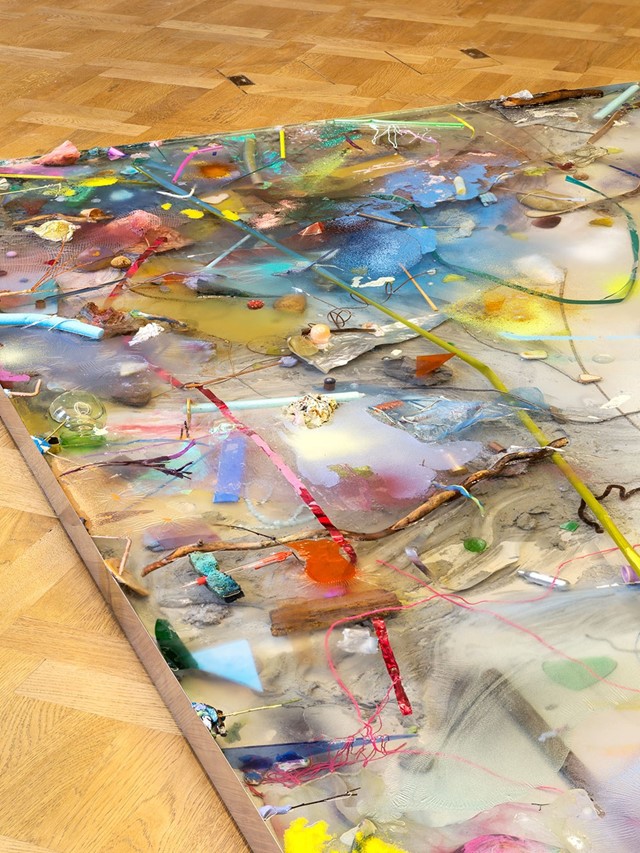
On audience reactions...
“I’m interested in the condition of the crowd (of which I am a part), its neurosis, craving for intensities, fun and distraction, its panic and lust, its need for placation, its faith in fakes. At the nub of my practice is an interest in the energising opposition / tension between nature and artificial imitation, antiquity and plasticity in the tourist, and leisure industries and the consumer experience.
Although this work has a different material palette, I hope it still discusses a kind of sour narcissism. I like the idea of how we categorise materials into natural or synthetic, or the idea that nature can be poisonous and toxic and that something synthetic can remedy that. Or the idea in sensual densities, the attractions and repulsions between materials like oil and water. Plastics are actually reshuffled deep fossils, the most ancient natural sap translated into the most jarringly manmade thing; in turn strangling the world back again.”
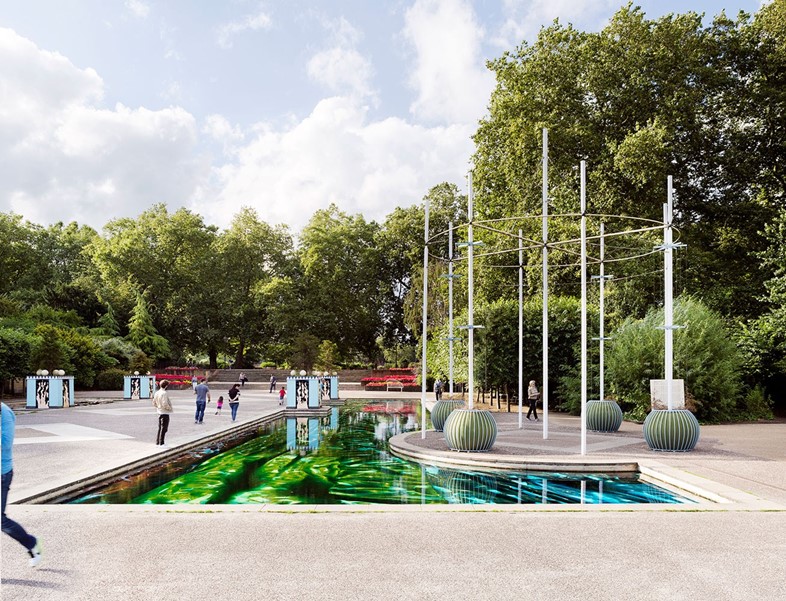
Samara Scott’s new installation will be on display at Pleasure Garden Fountains, Pump House Gallery, Battersea Park, until September 25, 2016.
